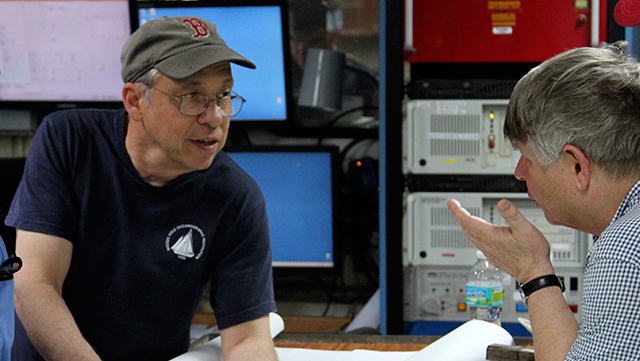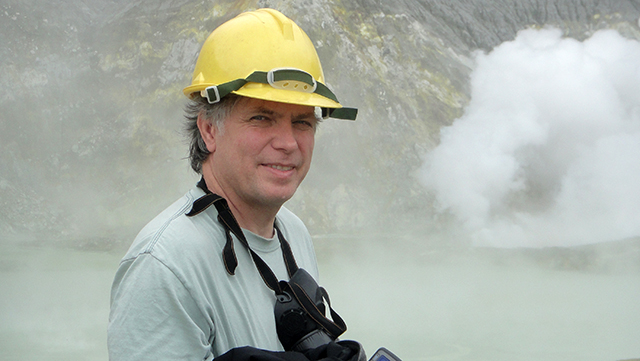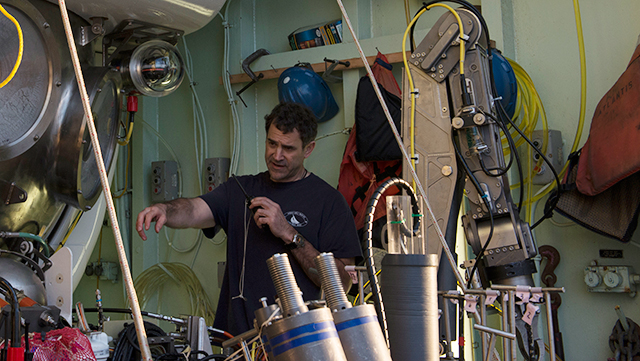Events
Science Made Public
During July and August, the Woods Hole Oceanographic Institution's Exhibit Center and Information Office are sponsoring a series of public talks by WHOI scientists and engineers designed for a lay audience about WHOI's manned submersible Alvin. Everyone is welcome to attend.
All talks are held on Tuesdays at 3 PM (unless otherwise noted) at Redfield Auditorium, 45 Water Street, Woods Hole, MA.

August 5, 2014 • 3 pm
Autonomous Underwater Robots: How they work
Dana Yoerger, Ocean Engineer
Autonomous underwater vehicles (AUVs) like WHOI's REMUS, Sentry, and SeaBED are important tools used to explore the ocean. They are controlled by on-board computers and powered by internal batteries; they keep track of their own motions and ensure that their sensors are operating properly. Learn about the science and engineering that goes into creating vehicles that can carry out missions with little or no help from people.

August 12, 2014 • 3 pm
Alvin and the Wet Wi-Fi
Maurice Tivey, Marine Geologist
Sound has traditionally been the communications medium of choice in the ocean, but engineers at Woods Hole Oceanographic Institution developed an underwater "optical modem" that uses light to transmit information at a much higher rate than is capable with sound and that was recently used by scientists and engineers to collect data from a seafloor borehole observatory. Learn more about this new tool, how it was used, and what the data from a recent Alvin dive on the Juan de Fuca plate showed.

August 19, 2014 • 2:30 pm
Humans in the deep ocean, from imagination to reality
Bruce Strickrott, Alvin Group Manager
In 1870, Jules Verne penned his famous novel, 20,000 Leagues Under the Sea, putting on paper as fiction what many had dreamed about—the ability to visit and explore the unknown depths of the ocean. Since then, Verne's dream of deep ocean exploration has become a reality and has resulted in profound discoveries about the ocean and our planet. Learn about the history of human-occupied submersibles, starting from the early primitive designs and working toward how we operate Alvin today, as well as plans to take Alvin even deeper over coming years. During this presentation, Strickrott will moderate a live phone call to the research vessel Atlantis to hear first hand about Alvin’s latest adventures.

August 26, 2014 • 3 pm
Life in an Earthquake Zone
Susan Mills, Marine Biologist
Deep-sea hydrothermal vent sites host dense communities of animals in a food web built on chemical energy from beneath the seafloor. These sites experience frequent disturbances, like volcanic eruptions, that sometimes wipe out entire communities. How does life return to sites after such an event? Learn how a site on the East Pacific Rise was recolonized by distant populations of animals after a 2006 eruption and how its transformation has added to our understanding of how these communities persist in this unstable environment.